Travel memories can last a lifetime, and for those who love animals, encountering a unique regional critter can make those moments all the more unforgettable. Each state offers the opportunity to experience native fauna, in rescue facilities, on a sightseeing tour, or out in the wild. From marveling at bears as they hunt salmon to snorkeling alongside manta rays, you’re bound to find an activity or animal on this list to plan your next trip around. Here are the best animals to spot in every state.
Alabama: Black Bears

The official state animal of Alabama is the North American black bear, which primarily inhabits the southwest region of the state, though there’s also a small but growing population in the northeast. To witness these majestic creatures for yourself, consider a visit to Little River Canyon National Preserve, where these bears have come to thrive in recent years. A hike to the top of the park’s Lookout Mountain not only offers picturesque views of the surrounding scenery, but also increases the odds you may encounter a black bear noshing on some berries and nuts along the way.
Alaska: Grizzly Bears

One of the most iconic destinations to see bears in the wild is Katmai National Park in Alaska, home to the largest population of coastal grizzly bears in the world. From late June through September, visitors can position themselves on viewing platforms at a safe distance to watch the mighty grizzlies fish for salmon along the Brooks River. With around 2,200 bears calling the park home, Katami is one of the few places in the world where the local bear population remains strong, as these creatures live an undisturbed life removed from development and urbanization.
Arizona: Javelinas

Javelinas are pig-like creatures that are rather rare in most places of the country, but this unique wildlife species is common at Saguaro National Park in Tucson. You're likely to notice their unpleasant smell before you see them, and you might even hear their squeals and grunts. The rather entertaining creatures usually don’t move too quickly, unless provoked, so there’s plenty of time to capture photos. But be sure to keep a safe distance, as they can become aggressive if you get too close.
Arkansas: Rocky Mountain Bull Elks
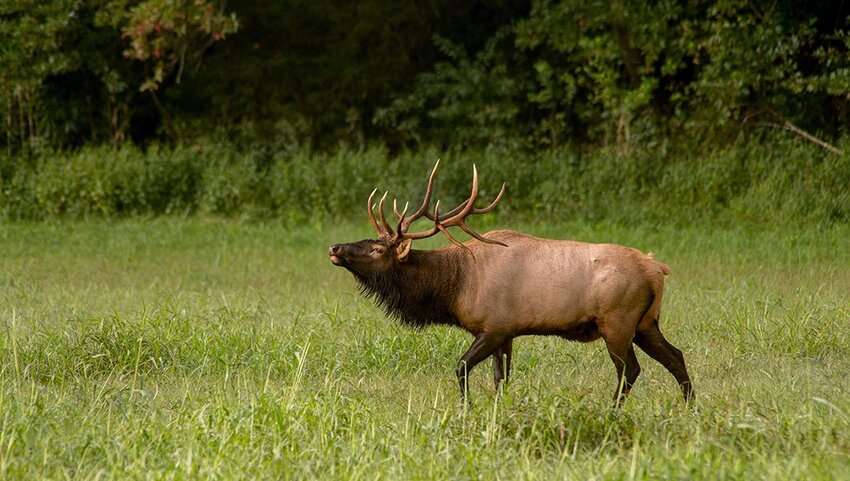
Rocky Mountain Bull Elk are one of the largest mammals in North America — the males can weigh well over 700 pounds while females tend to weigh around 500 pounds — and can be spotted throughout Arkansas. A free-range herd of nearly 500 strong roam near Buffalo National River in the north-central part of the state, making that region one of the best places to catch a sighting of these powerful and majestic animals. Viewing is best in Boxley Valley along the six-mile stretch of highways 43 and 21; it’s there that on a summer day, you’ll often find these elk seeking a cool respite under a shady tree or along the river’s edge.
California: Whales & Dolphins

Witnessing a whale or dolphin breach the ocean surface is one of nature’s most spectacular sights. That’s what makes Capt. Dave’s a must-visit, as this California institution is frequently ranked among the world’s best spots for sighting these aquatic mammals. Located between Los Angeles and San Diego, this particular region is home to the highest concentration of blue whales, the largest animal on the planet. Blue whales migrate through the waters between May and November, and often come close to tour boats to get a closer look at humans. Orcas, fin whales, minke whales, and humpbacks can all be spotted here, too.
Colorado: Wolves

Located just 35 minutes west of Colorado Springs along the north slope of Pikes Peak, the Colorado Wolf and Wildlife Center offers visitors the opportunity to enjoy personal encounters with “ambassador wolves.” Though it’s advisable to keep a distance from most wolves, these docile creatures are gentle enough for human interaction, offering the rare chance to see a wolf up close. A variety of guided tours are available, including feeding and full moon tours, all of which aim to inform and dispel myths about these animals.
Connecticut: Weasels

WEasels can be found across the state of Connecticut, but Mianus River Park nature reserve along the border of Stamford and Greenwich is particularly known for its native weasel population. You can spot the bushy-tailed critters along a two-mile stretch of river within the park. With two trails that follow along the water, visitors can set out on an adventure in hopes of seeing these creatures firsthand, which have short legs with long, thin bodies, white fur on their bellies, and brown fur on top.
Delaware: Foxes

Delaware is home to both red and gray foxes which can be seen in increasing numbers at the beach and in the dunes along the eastern shore of the state. One particularly perfect spot to snap a photo of these critters firsthand is at Broadkill Beach, which is surrounded by the Prime Hook National Refuge. It’s here that foxes are known to frolic in the sand, or in the winter, gracefully trekking through the snow, offering a unique opportunity to see foxes behave differently depending on what time of year you visit.
Florida: Manatees

Head to the Florida Keys to not only enjoy the beautiful beaches and tropical environment, but the region’s native manatee population as well. Visitors to the region should consider a trip to John Pennekamp State Park, where kayak tours and snorkeling excursions can get you up close and personal with these marine creatures. There are miles of kayak trails through the park’s mangrove, where manatees are known to congregate and raise their young due to the quiet and sheltered nature of the location. Just be sure to keep your distance, as feeding or annoying these humble creatures is illegal in the state of Florida.
Georgia: Gators

Over 120 miles of canoe trails wind through the still, murky waters of the Okefenokee Swamp in Okefenokee National Wildlife Refuge in southwest Georgia. While paddling around the moss-draped cypress trees, you’re likely to see plenty alligators, not to mention some waterfowl and wading birds. Overnight paddling trips are available as well, where ambitious adventurers sleep on an open-air platform, only inches from the gator-filled waters. Exercise caution, however, with these wild gators, and always keep a safe distance.
Hawaii: Manta Rays

One of the most graceful creatures in the sea, manta rays are gentle giants with no teeth, barbs, or stingers. Given the animal’s docile nature, humans can safely dive into the water and swim alongside them on a unique Kona excursion that’s bound to be the highlight of your trip to the Big Island. This snorkeling expedition takes place after dark, as operators use beams of light to attract the plankton that manta rays feed on. So grab a snorkel, dive on into the water, and enjoy as the manta rays weave around you.
Idaho: Moose

Idaho doesn’t have a state animal, but it is home to hundreds of fascinating creatures including moose, which can weigh as much as 2,300 pounds. While moose can be spotted in many areas, one of the best places to see them is the Kootenai National Wildlife Refuge which lies five miles west of Bonners Ferry in the northern portion of the state. Head to the gazebo that overlooks Cascade Pond; here you can look through two magnifying scopes that offer great views of multiple ponds where the moose come to drink and feast on the high-quality forage.
Illinois: Badgers

The American badger can be found across the state of Illinois, with the exception of the far southern tip of the state, and badger burrows (marked by large amounts of displaced soil) are a common sight. These stout creatures have long snouts, wiry black and white hair, and wide paws perfect for digging. High populations of this nocturnal mammal can be found in sand prairies of northwestern and central Illinois, such as Sand Prairie-Scrub Oak State Nature Preserve or Ayers Sand Prairie.
Indiana: Bison

A herd of bison calls the prairie in northwest Indiana home, thanks to the Nature Conservancy's extensive bison conservation program. These creatures roam through 1,000 acres of Kankakee Sands, the organization's easternmost preserve. For those who want to see the bison themselves, it’s safe and easy to watch them from the viewing area that runs through Kankakee Sands. Offering a slightly higher elevation, the viewing area creates a natural kind of platform for gazing upon the bison as they graze on the prairie.
Iowa: Bobcats

The growing population of Iowa bobcats have primarily taken up residence in the southern and western parts of the state. While the animal can be rather elusive, residents have noted seeing them more often strolling through neighborhoods. If you want to increase your own odds of coming across a bobcat, consider a trip to Lake Iowa Park, where these graceful felines roam freely through the wild.
Kansas: Bison

Kansas is home to the fifth-largest bison population in the country. While they can be seen at parks and ranches throughout the state, one of the best places to watch these larger than life animals is near Canton at the Maxwell Wildlife Refuge. This refuge is home to the largest public herd of bison, with upwards of 200 members. The refuge even offers narrated tram tours that allow visitors close access to these creatures in a safe, monitored environment.
Kentucky: Thoroughbred Horses

There may be no place as synonymous with horses as Kentucky. The Bluegrass State contains both the Horse Capital of the World at Lexington as well as the Saddlebred Capital of the World at Shelbyville. There’s no better way to experience thoroughbred horses — Kentucky’s state animal — than on a horse farm tour at Claiborne Farm. This farm has been the home of 300 sires of champions, including six Triple Crown and 10 Kentucky Derby winners. Claiborne’s tours allow visitors to meet the farm’s current equestrian residents, pay their respects at the famous Secretariat’s gravesite, and more.
Louisiana: Alligators

The Original Honey Island Swamp Tour is one of the best ways for anyone to get up close to the alligators of Louisiana. This beloved local activity will take you through one of the country’s most unspoiled river swamps that these gators call home, located just 33 miles outside of New Orleans. The 250-square-mile Honey Island swamp is filled with moss-draped cypress trees that offer the gators shelter and protection, so chances are you’ll see quite a few of these mighty beasts during your excursion.
Maine: Moose

Maine is famous for its moose, and in the North Maine woods, these mild-mannered yet mighty animals outnumber people three to one. Northeast Whitewater offers paddle tours through ponds and shallow bodies of water where the moose are known to feed. You’ll not only be surrounded by spectacular scenery, but also you’ll be so close to the moose that you can capture some incredible photos while listening to the creatures slurp up the pond weeds.
Maryland: Wild Horses

Assateague Island is home to a herd of “wild” horses that are actually feral animals, meaning they’re descendants of domestic horses that have reverted to a wild state. These creatures have formed a unique wild horse society that has managed to survive storms, scorching heat, mosquitoes, and the limited food available on this remote barrier island. A local tour will allow you to enjoy the beauty of these wild horses in a part of the island that few get to experience.
Massachusetts: North Atlantic Right Whales

Located at the extreme tip of Cape Cod, in Provincetown, visitors can embark on a whale-watching boat tour to see the state’s mammal, the North Atlantic right whale. As one of the largest mammals in the world, these whales can be seen between December and May, with peak viewing season falling in the latter months. The whales concentrate in Cape Cod Bay, as those waters are a rich foraging ground with a high concentration of zooplankton, so come and watch these gargantuan creatures feed up close and personal.
Michigan: Elk

Pigeon River Country State Forest near the town of Gaylord is home to over 1,000 majestic elk. The massive animals live in a 105,000-acre area in the northeast Lower Peninsula, and are one of the largest free-roaming herds east of the Mississippi. Given that the forest region provides year-round food sources, there’s no bad time of year to come and gaze upon the local elk for yourself.
Minnesota: Gray Wolves

At Minnesota’s International Wolf Center, visitors can get up close to gray wolves in the Exhibit Pack, watching as the creatures play, eat, and sleep. Though you normally want to keep a distance from these ferocious creatures, the experience here offers a safe and informative way to learn more about local wolves. Staff naturalists will provide expert insight into these beautiful animals, including elaborating about the gray wolf’s social dynamics and how important they’ve been to various cultures over time.
Mississippi: Bald Eagles

The majestic bald eagle is a symbol of the United States as a whole, but a growing number of these incredible creatures call Mississippi home. The Mississippi Sandhill Crane Wildlife Refuge in Gautier is one of the locations in particular where these birds nest, providing for incredible bird-watching opportunities. Throughout the state, bald eagles are seen more frequently during the winter months, though they reside by the Gulf of Mexico year round. So grab a pair of binoculars and head down south for an avian experience unlike any other.
Missouri: Red Foxes

The red fox is one of the most beautiful mammals you can see in the state of Missouri. Ranging in color from pale orange to deep reddish brown, these adorable critters boast a fluffy, white-tipped tail and black feet. The Lipton Conservation Area offers a particularly great opportunity to see one or more of these animals for yourself, as a quick walk along the park’s half-mile trail provides countless chances for a red fox to scurry by your feet.
Montana: Mountain Goats
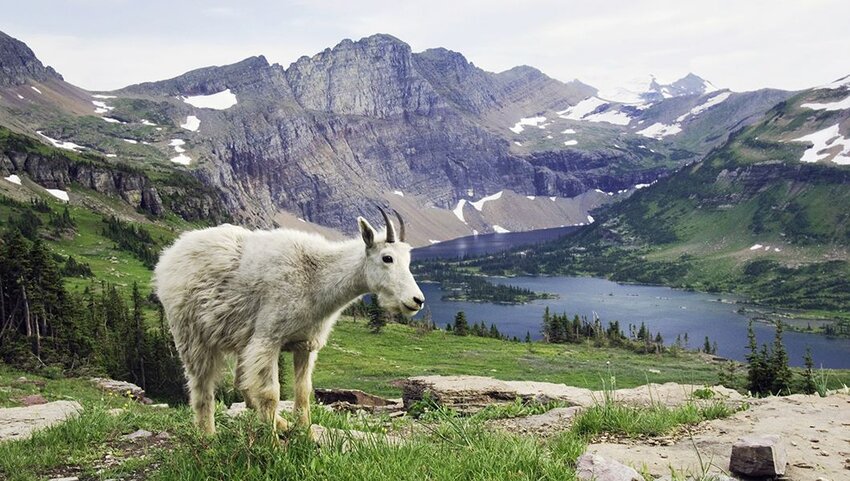
Glacier National Park offers some of the most spectacular mountain views in the country, so it stands to reason that it also provides one of the most hospitable environments for mountain goats. If you want to see a mountain goat for yourself, consider a trip to Logan Pass, where visitors can find these goats basking in the sun along the roadside and walking closely alongside humans along the park’s various pathways. A quick trip down a backcountry trail takes visitors to a natural mineral lick where wild goats gather to enjoy a brief treat.
Nebraska: Bison

Fort Niobrara National Wildlife Refuge was established to provide a protected preserve and breeding ground for native birds in 1912, before later being expanded to include the conservation of bison herds. Today, this refuge is the ideal place to observe these bison along a 3.5 wildlife drive from the safety of your personal vehicle. Be careful not to disturb the bison, but rather to let them roam freely and watch from a safe distance with a zoom camera lens.
Nevada: Wild Mustangs

Over 60,000 free-roaming wild mustangs can be found throughout Nevada, making up more than half the entire population of wild horses in the entire country. Virginia Range is among the best spots to view these majestic steeds, at a location that lies between Reno and Virginia City. Local conservation efforts are among the most successful in the country, allowing the mustangs to roam freely and safely for all to see.
New Hampshire: Peregrine Falcons

Master falconer Nancy Cowan transformed her husband’s one-time hobby into one of the world’s few licensed falconry schools. The New Hampshire School of Falconry offers a two-hour intro class that will teach you how to handle a Peregrine falcon, as guests will experience the thrill of the bird as it flies from and back to your gloved hand. Though Nancy tragically passed away in 2022, her legacy in cultivating an ideal experience for visitors to learn more about these spectacular birds of prey lives on.
New Jersey: Red Foxes

Island Beach State Park is known for its miles of dunes and sandy beaches, which are home to a native population of red foxes. These sly creatures are known for frolicking in the sands, and while you may be hard pressed to get up close to one, you’re bound to see the foxes scurrying around in their small packs. If you’re lucky, you may even come across a baby fox or two making for a particularly memorable experience.
New Mexico: Black Bears
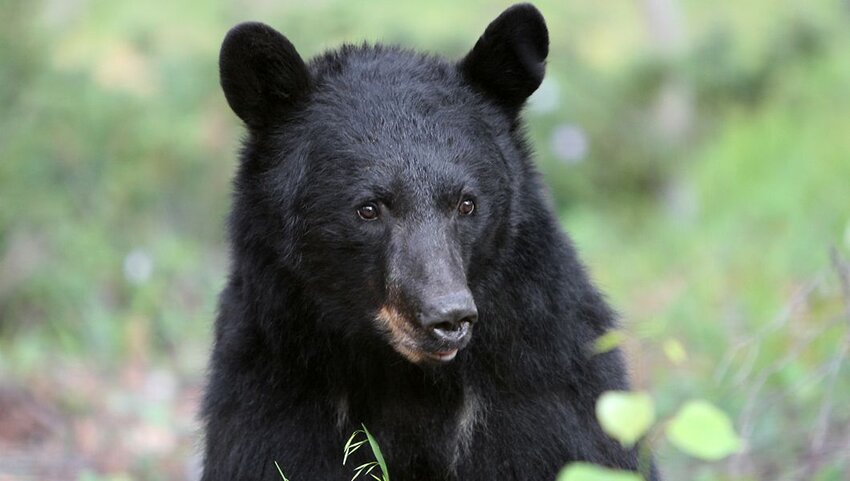
The official state animal of New Mexico is the New Mexico black bear, a subspecies of the American black bear. Despite their name, these creatures can have fur that’s brown, reddish, or cinnamon colored. One of the best places to view these bears in the state is at Sugarite Canyon State Park, which straddles the border of Colorado. Given that black bears are omnivores, you’re likely to see one foraging for berries and other natural vegetation along your walk through the park.
New York: Harbor Seals

Extending a long distance out into the Atlantic Ocean, Long Island, New York, is one of the best places in the country to witness harbor seals firsthand. Montauk State Park is a particularly good location to see these animals up close, as naturalists lead seal walks each January through April to look at harbor seals that are wintering in the region. There are up to five species of seals that can be observed on these excursions, making it a can’t miss opportunity for animal lovers in Long Island.
North Carolina: Bottlenose Dolphins

The Outer Banks is one of the best regions on the east coast for spotting bottlenose dolphins. Few opportunities offer a better chance than by joining up with a dolphin watch trip, as odds are you’ll see one of these animals since they enjoy swimming through the boat’s wake. If motorboats aren’t your thing, you can often see dolphins right from the shore, but close encounters are possible while sailing or kayaking too. The dolphins frequent these local waters as soon as they begin to warm around May, and stick around until October,
North Dakota: Bighorn Sheep
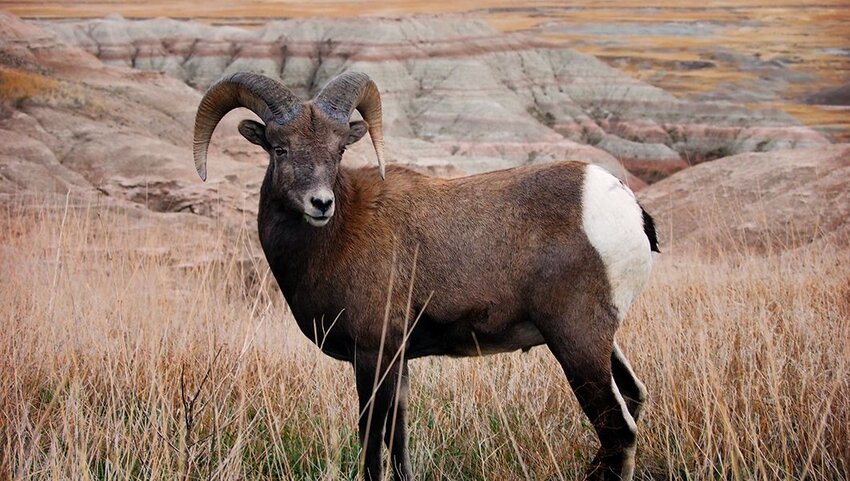
Bighorn sheep are the rarest large game species in North Dakota, but that doesn’t mean you can’t see one for yourself. The state has a population of roughly 500 of these animals that can be seen in the wild among the steep badlands of Theodore Roosevelt National Park, particularly along the Little Missouri River in the North Unit. The bighorn sheep actively forage during the day, making it relatively easy to spot them during those hours.
Ohio: White-Tailed Deer
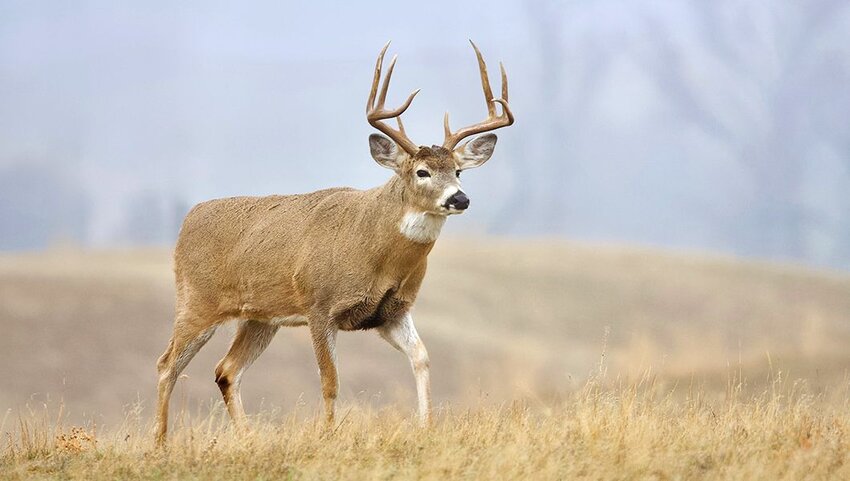
Ohio’s state animal is the white-tailed deer. While it can be seen in many places throughout the state, one of the best locations is Salt Fork State Park, which is home to a large population of these creatures. Keep an eye out for the white-tailed deer — not to mention bobcats — while exploring the area around the Morgan’s Knob loop trail.
Oklahoma: Buffalo

The Tallgrass Prairie Reserve near the town of Pawhuska is the largest protected area of tallgrass prairie on the planet. It’s here that you’ll find one of the country’s largest buffalo herds, consisting of some 2,500 buffalo. The buffalo can be spotted right off the main road that runs through the 39,000-acre preserve, allowing visitors the opportunity to creep alongside these powerful, stoic creatures from the safety of one’s vehicle.
Oregon: Raptors

The Cascades Raptor Center rehabilitates over 200 birds of prey every year, from those that have been tangled in fences, hit by cars, and even targeted by hunters. Once these birds are brought in, they’re nursed back to health and released back into the wild, but not before visitors have the chance to learn more about the various breeds of owls, hawks, and other flying creatures kept on site. Some birds at the Cascades Raptor Center are permanent residents due to the extent of their injuries, though in those cases the raptors remain well-cared for and help add to the educational experience of the center as a whole.
Pennsylvania: Elk

Elk Country Visitor Center is home to the largest free-roaming elk herd in the northeastern part of the U.S. These elk are wild animals that are descendants of the 177 Rocky Mountain elk released into the state between 1913 and 1926 as part of a major conservation effort. Today that number has grown to over 1,000 elk in the herd, and many of them can be seen if you visit in the spring or fall at dawn or dusk.
Rhode Island: Porpoises

Newport, Rhode Island is often referred to as the sailing capital of the world, but it’s also a great location for spotting harbor porpoises. These delightful and jovial sea creatures are spotted most frequently in Narragansett Bay between March and May, though are seen in less frequent numbers during the winter months as well. So grab a boat and set out on a little sailing tour of the harbor to get up close to these creatures for yourself.
South Carolina: Alligators

Lake Marion is the largest lake in South Carolina, spanning around 110,600 acres. In addition to its scenic natural flora, the lake is also home to some of the largest alligators found anywhere in the country. An alligator weighing 1,025 pounds was caught here in 2010 and a 625 pounder was pulled from the lake in 2022. They can be seen in the lake’s shallow and swampy areas, though we advise maintaining a safe distance and viewing them from afar.
South Dakota: Buffalo

Nestled in the heart of South Dakota’s Black Hills, Custer State Park is home to a free-roaming herd of nearly 1,400 buffalo. While you’re bound to see many of the buffalo just by taking a drive on the Wildlife Loop, a safari Jeep tour is a fun and safe way to focus your efforts on snapping photos of the buffalo in action while someone else gets behind the wheel.
Tennessee: Black Bears

The Smoky Mountains are home to a wide range of wildlife, but the most iconic creature in the bunch is undoubtedly the black bear. One of the best places to see bears in Great Smoky Mountains National Park is as Cades Cove — an 11-mile loop drive that winds through forests and open fields that the black bears frequent.
Texas: Longhorns
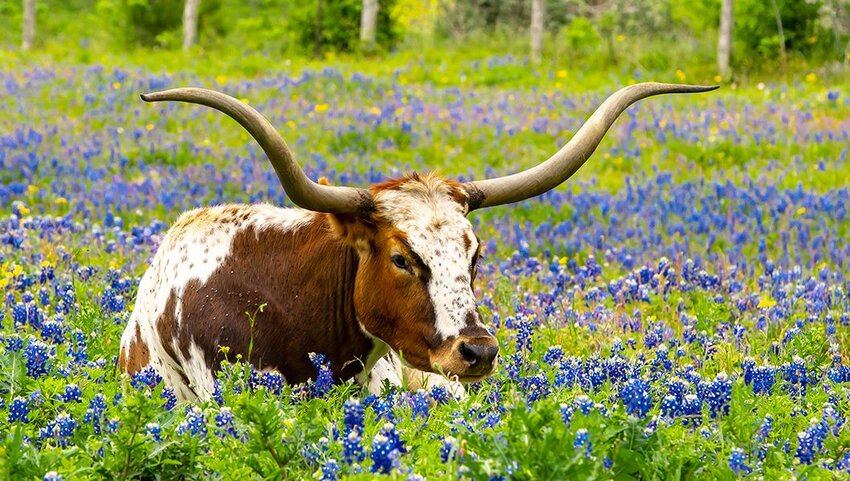
The Texas Longhorn is the official animal of the Lone Star State, and is characterized by its lengthy horns that can span over eight feet from tip to tip. One of the best places to see these uniquely regional creatures is at Lyndon B. Johnson State Park and Historic Site, about 62 miles west of Austin. Setting out on a walk along the 1.2 miles of trails will bring you to see the Longhorn cattle up close, though be sure to maintain a safe distance from the tip of its horns.
Utah: Wild Horses

Head to the Onaqui Mountain Herd Management Area located 60 miles southwest of Salt Lake City to immerse yourself in the world of wild mustangs with Jess Lee Photography. Not only will you get up close and personal to the majestic wild horses that call this rugged landscape home, but you’ll also learn the perfect photographic techniques to capture the animal’s spirit. Forget about pulling out your cell phone and snapping a shot for your Insta, Jess Lee Photography ups the photography game in a big way by helping you take professional photos that are worthy of being framed and displayed.
Vermont: Sled Dogs

At Eden Mountain, sled dogs live a life of freedom and care. This beautiful working sled dog farm and touring center is surrounded by 3,000 acres of Vermont wilderness, and furthermore includes 10 miles of private trails that are exclusively meant for dog sledding. Visitors will get to know the “free range” mixed breed dogs and huskies and even feel the thrill of driving the team. It’s an experience that can be enjoyed year-round, whether in the snow or on wheeled sleds that allow for spring, summer, and fall rides too.
Virginia: Wild Ponies

Virginia’s famous Chincoteague ponies live on Assateague Island where you can see them roaming free in the wild. One of the best times to visit the region is on the last Wednesday in July, on which the annual Pony Swim and Auction falls. In this event, attendees can witness the ponies swim from Assateague to Chincoteague Island, though it’s not the only time of year during which a visit is warranted. You can always spot these animals at any time of year on your own or via a Pony Express Nature Cruise.
Washington: Orcas

Viewing orcas in the wild is an incredibly rewarding experience, and many of these magnificent animals live in the San Juan Islands, which are easily accessed by ferry off the coast of Washington state. June through September in particular are peak months for orca sightings. From whale-watching boat tours to guided kayak excursions, there’s no shortage of water activities allowing you to get close to the orcas yourself.
West Virginia: White-Tailed Deer

Canaan Valley National Wildlife Refuge is the largest high valley elevation east of the Rockies, and is also one of the best places to see white-tailed deer in the wild. With 31 miles of trails and roads for hiking and wildlife observation, you’re bound to encounter many white-tailed deer while roaming through the refuge where these animals live a peaceful and undisturbed lifestyle.
Wisconsin: Cranes
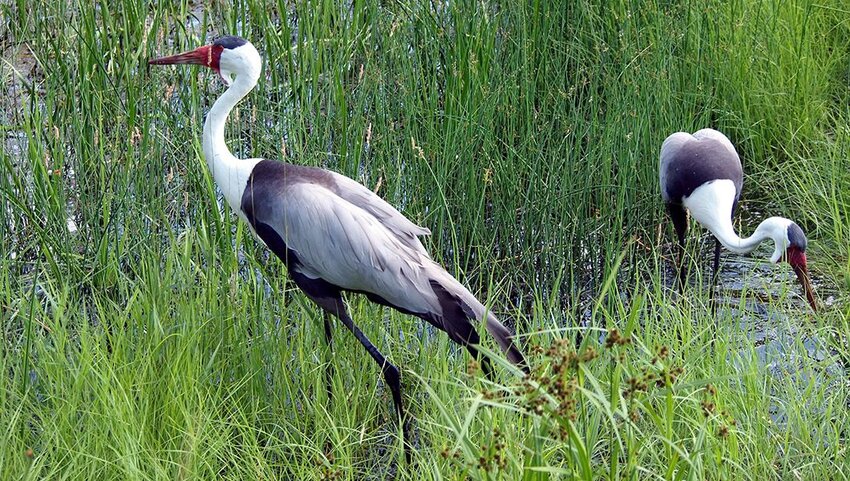
The International Crane Federation in Wisconsin helps to conserve cranes and their essential ecosystems, watersheds, and flyways. It’s the only place on Earth where you can observe all 15 species of cranes, with nature trails that wind through the 100 acres of restored prairie. Guided tours are offered as well, providing more insight into cranes and the conservation efforts.
Wyoming: Elk

The National Elk Refuge near Grand Teton National Park in western Wyoming provides habitat to a local population of elk, allowing the animals an undisturbed place to survive during the region’s harsh winters. The herd on site includes as many as 5,000 elk, which head down the mountain around November every year. Sleigh rides are available as well, bringing visitors right into the heart of the action among the wild elk.





